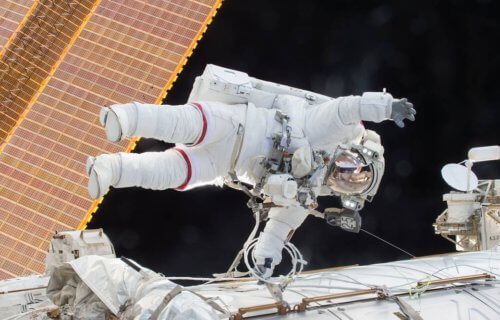DALLAS, Texas — Many believe humanity’s future is in the stars. It’s certainly hard to argue against that point of view. NASA is planning on establishing a moon base in the coming decade and billionaires like Elon Musk are funding their own private space travel efforts. However, if future humans plan on living in outer space, cardiovascular health is going to be a key issue. Researchers with the American Heart Association report long-term space travelers may be putting their hearts in serious jeopardy.
Their study finds weightlessness in zero gravity can cause the human heart to waste away and shrink over time. In light of these findings, researchers theorize that shorter space trips spent engaging in “short bursts of repeated high-intensity exercises” may be the only way to combat these adverse cardiovascular developments.
On Earth, whenever you sit down or stand up gravity pushes blood into your legs. This means your heart must work harder to counter gravity and ensure blood flows throughout your body. In other words, gravity is good for our hearts. Remove gravity and its effects, and the heart will eventually shrink.
Making matters worse, study authors say even “extensive periods of low-intensity exercise” fail to remedy this problem. This means a long power walk around your space ship isn’t going to do the trick.
“The heart is remarkably plastic and especially responsive to gravity or its absence. Both the impact of gravity as well as the adaptive response to exercise play a role, and we were surprised that even extremely long periods of low-intensity exercise did not keep the heart muscle from shrinking,” says senior study author Benjamin D. Levine, M.D., a professor of internal medicine at UT Southwestern Medical Center and director of Texas Health Presbyterian’s Institute for Exercise and Environmental Medicine, in a media release.
Swimming and Zero-G both damage the heart?
With researchers Earth-bound, the team reached their conclusions in a unique and innovative way. Study authors compared health data pertaining to astronaut Scott Kelly’s year-long mission in space aboard the International Space Station to data collected on swimmer Benoît Lecomte as he swam across the Pacific Ocean. Those two datasets may not sound all that similar, but swimming largely recreates the effects of weightlessness or zero gravity. This is especially true when one engages in “prone swimming,” which is a common technique among long-distance swimmers like Lecomte.
Kelly lived on the ISS from 2015 to 2016 and Lecomte swam across the Pacific in 2018.
The team examined both men’s hearts extensively and evaluated them before, during, and after their respective journeys. Lecomte swam close to six hours per day for a total of 156 days. Kelly followed a strict regimen of one to two hours of exercise per day, six days a week while in space.
Study authors assumed that all of Lecomte’s swimming would have protected his heart from shrinking. However, both men lost left ventricle mass over the course of their trips, with Kelly losing 0.74 grams per week and Lecomte 0.72 grams per week. The study also revealed a drop in the diastolic diameter of both men’s left ventricles. Kelly’s dropped from 5.3 to 4.6 centimeters and Lecomte’s reduced from five to 4.7 cm.
Ultimately, the team says they need to do more research on this matter with a much larger population sample. Still, researchers say heart health needs to be a consideration as space tourism and regular space travel move from science-fiction to reality.
The study is published in Circulation: Journal of the American Heart Association.
